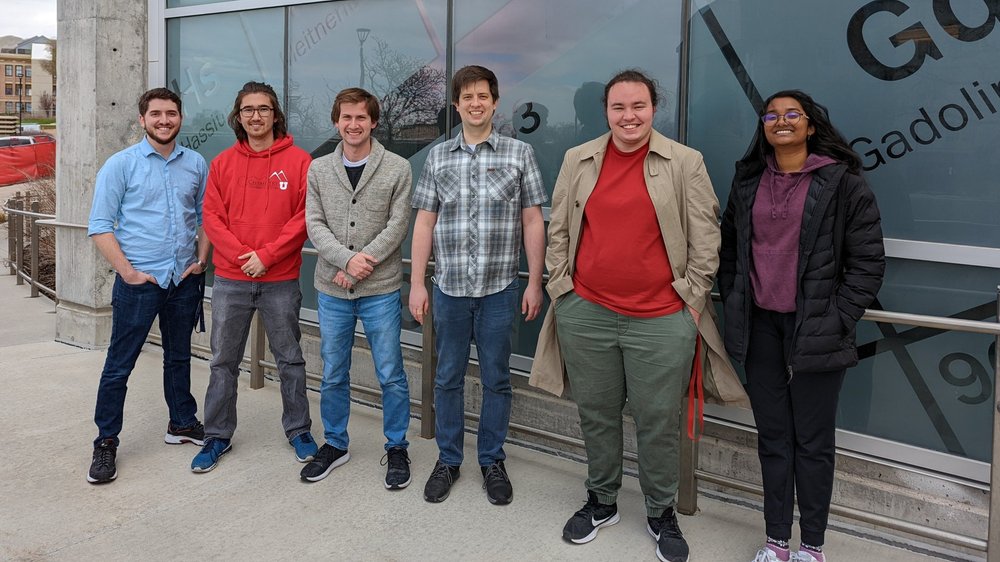Project Background
Organic mixed ionic electronic-ionic conductors are emerging soft materials that conduct both ions and electrons. Because of their dual conductivity, these materials are capable of converting ionic signals to electronic signals and versa. Although these materials are promising for bioelectronics, energy storage, and brain-like computing applications, the fundamental chemical design rules that underlie how these materials function are not well understood. What determines the kinetics of ion injection into organic mixed conductors? What determines the stability of these materials?
We use a wide range of electrochemistry methods, spectroscopies, and microscopies to interrogate the dynamics of organic mixed conductors. Our goal is to determine structure-function relationships in these materials that will lead to new design principles and guide researchers in developing the next generation of bioelectronics and energy storage technologies.
In this project, we propose to synthesize conjugated polymers using electropolymerization and test their performance as organic mixed conductors. Electropolymerized polymers have morphologies that are much different than their counterparts that are synthesized using more traditional routes. By varying polymer composition and morphology, our goal is to uncover the design rules that determine ion injection kinetics and stability of these materials.
Student Role
The undergraduate student is expected to work full-time (40 hours weekly) and will be responsible of three main tasks:
- Synthesize conjugated polymers through electropolymerization
- Measure the kinetics of ion injection in electropolymerized mixed conductors
- Fabricate organic transistors from the electropolymerized conjugated polymers
The student's first task will be to develop recipes for 3-4 electropolymerized conjugated polymers using a combination of literature references and experiments varying synthesis parameters. The student will investigate the impact of thermal annealing on the adhesion of polymers to substrates and determine how synthesis parameters (time, voltage, etc.) impact polymer film thickness.
After developing recipes, the student will use spectroelectrochemistry to measure ion injection kinetics. If the kinetics experiments are promising, the student will investigate how ion injection occurs using a combination of electrochemical quartz microbalance, in situ photoluminescence, and X-ray diffraction. The student will also work with graduate students in the lab to use electron microscopy and atomic force microscopy to characterize the polymer morphology.
Once the student characterizes the most promising polymer films, the student will fabricate organic electrochemical transistors. The student will explore methods to transfer the polymer film from the electropolymerization substrate to a transistor substrate through either a wet or dry transfer method. The student will then learn how to collect transfer and output curves to characterize transistor performance.
Student Learning Outcomes and Benefits
The student will have the opportunity to lead their own research in an interdisciplinary laboratory. The PI will provide mentoring and the needed resources throughout the program. A graduate student will also be assigned to mentor the student during their stay.
The student will learn a wide variety of valuable skills relevant to chemistry research, such as electropolymerization, spectroelectrochemistry, transistor measurements, electrochemical quartz crystal microbalance, and photoluminescence microscopy. The student will sit in the graduate student office and will have regular input from the PI and graduate students regarding their project. The student may also have opportunities to use equipment at the Utah Electron Microscopy and Surface Analysis Lab as well as the Optical Spectroscopy Lab in the Department of Chemistry.
The student will have the opportunity to present their research through writing manuscripts and presenting at national conferences, such as the American Chemical Society National Meeting and the Materials Research Society National Meeting. The student will be encouraged to attend SPUR orientation, present at the Summer Symposium, and publish an abstract in the University of Utah Undergraduate Research Journal.

Connor Bischak
The PI has an open door policy and is happy to meet and answer research questions as needed. At the beginning of the program, the PI will describe expectations and go over the project in detail.
The student will be provided a desk and computer for work in the graduate student office. The PI will hold weekly subgroup meetings with the undergraduate student and graduate students working on similar projects. In preparation for the meeting, the undergraduate student is expected to copy data from the week onto a OneNote page and be able to talk through the page. The student can also schedule one-on-one meetings with the PI as needed.
The student will also have opportunities to work on outreach projects run by the lab and attend lab social gatherings. The PI will also help with graduate school applications and career advice.
